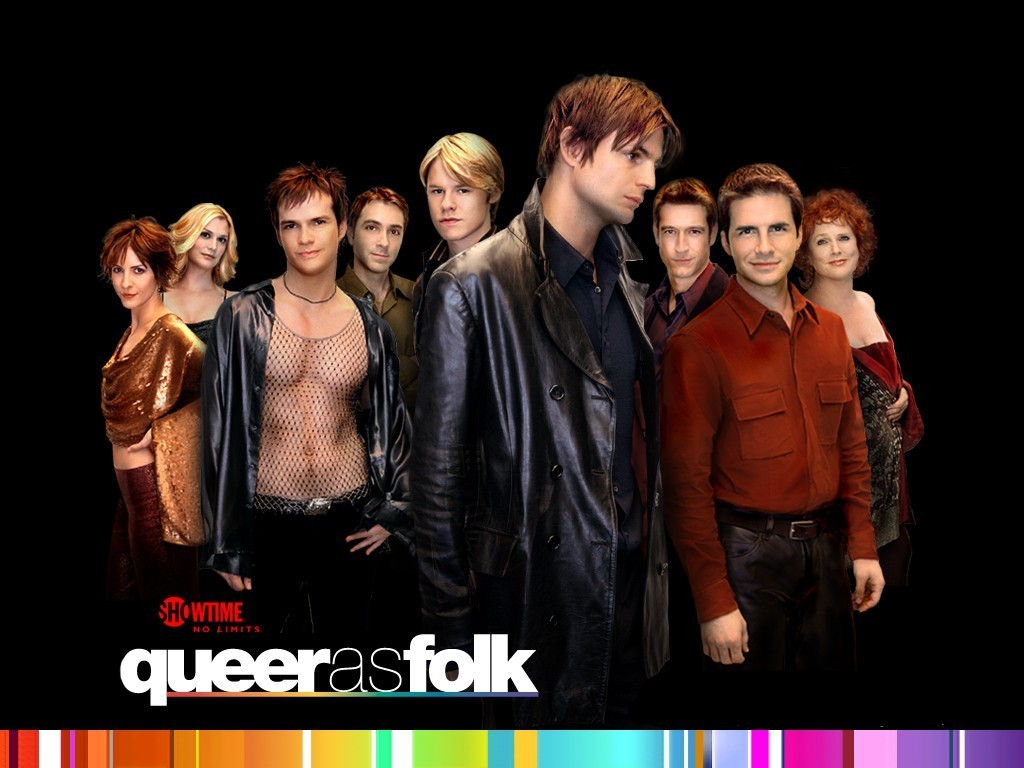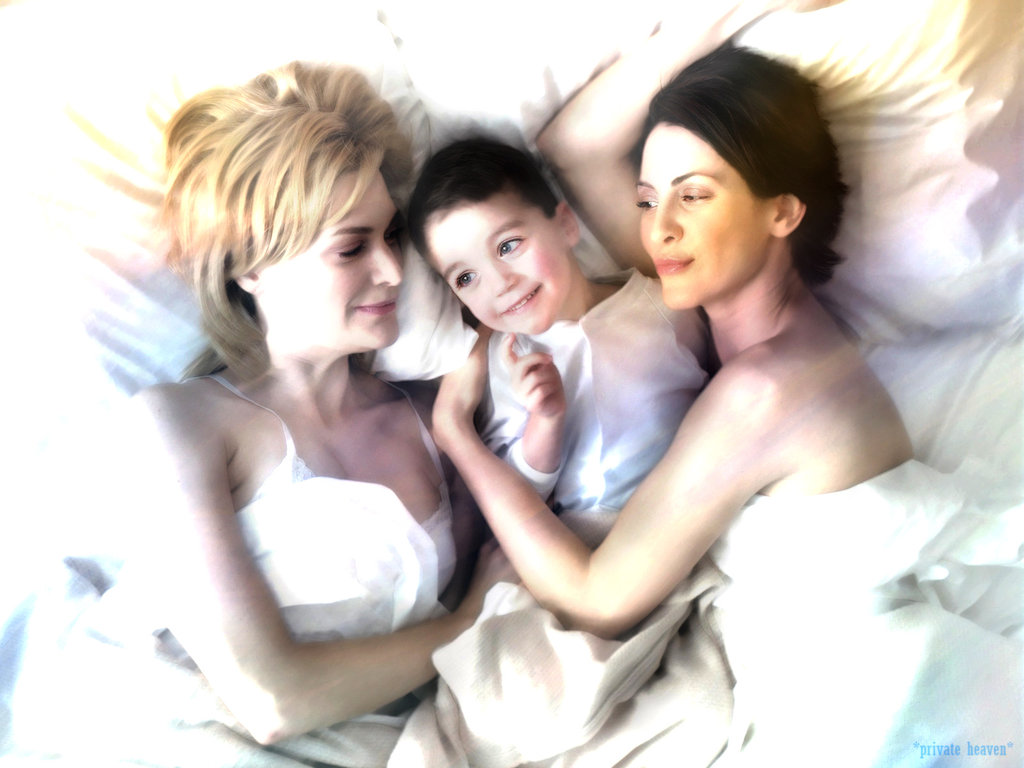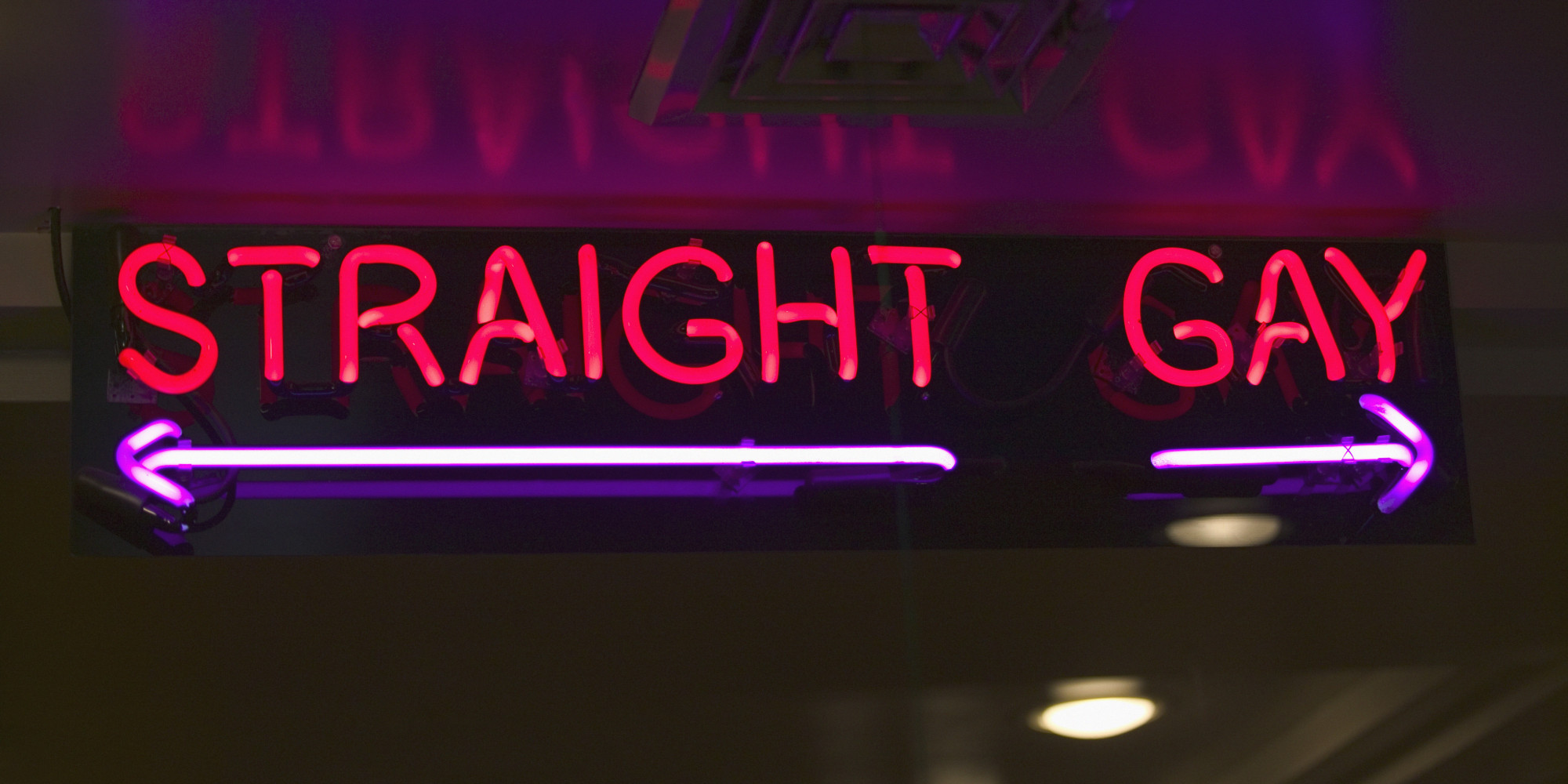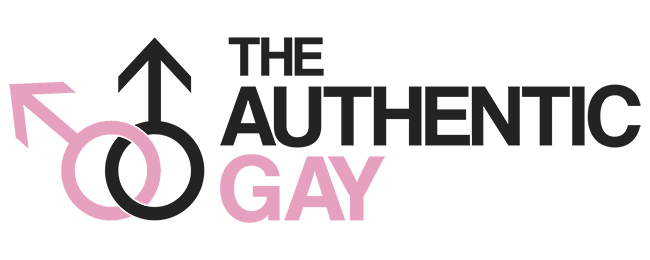How ‘Queer As Folk’ Introduced Me To Gay Culture

Like most young gay kids who grew up in a world dominated by heteronormativity, I had no formal education that taught me how to be a functional homosexual, let alone provide me with any positive gay influences. My own defining year of self-realization occurred during my freshman year of high school, during which I began the process of coming to terms with my sexuality. This volatile time of my life left me with a multitude of questions that demanded immediate recognition, thus compelling me to turn to the internet for answers.
As an early adopter of habitual YouTube use, I distinctly recall searching predictable keywords like “gay boys” and “gay sex,” as I was too scared to watch real gay porn on our family computer out of fear that it would cause malware and I would be discovered by my parents. I remember stumbling upon video montages of a young blonde guy and a hot, slightly older brunette, engaging in a series of kissing scenes paired with corny music. Finding these videos incredibly hot and titillating at the time, I soon came to realize that these guys were characters from the Showtime series ‘Queer As Folk.’
Back in those days, many YouTubers got away with uploading shitty pirated movies and TV shows, hence allowing me to view the entire series exclusively on YouTube for free. Each night I would stay up until some ungodly hour watching QAF, clear my browser history, and repeat the next evening until I had finished all 5 seasons. For me, discovering this series was a godsend, giving me an extremely campy, yet somewhat realistic exposure to gay culture during a time when I felt so severely isolated.
Now as I rewatch the series at 25 (approximately 10 years later), I look back at the lessons this show taught me during this time of critical development.
Drug Use is Glamorous, Tragic, and Real
The creators of Queer As Folk did not shy away from portraying drug use within the gay community as dangerous, glamorous, fun, tragic, but most importantly, existent. By using such a variety of contextual angles, they provide unique and accurate insight into how drugs and alcohol consistently play both dominant and background roles in the lives of these characters.

In the pilot episode alone, the use of alcohol, cocaine, and ecstasy are immediately normalized within the context of the close knit group of gay men we meet in the first scene. It is also made apparent to the viewer early on that Brian, a narcissistic, self-indulgent, highly desirable gay man, is able to be a professionally functional and competent human being, despite his rampant drug and alcohol use. In fact, despite his disregard for most human emotion, the show portrays Brian as the most financially successful within his group of friends, as a senior partner of a leading ad agency in Pittsburgh.

Naturally, as a high school student who had been taught D.A.R.E. (unsuccessful and infamous Drug Abuse Resistance Education program that used fear as a teaching method), this behavior came as a shock to me. How can beautiful and intelligent characters like Brian engage in such drug use and have it not negatively impact their career? Why do the other characters occasionally consume the same drugs and not even give it a second thought?
Naturally, the show intentionally juxtaposes functional drug use early on in the first season by placing protagonist Ted, an uptight, self-conscious, fiscally responsible accountant, into a GHB-induced coma. The reason this is so beautifully done and contextually important is that it is also Ted’s first time even trying this drug, displaying how one stupid mistake can lead to a life-or-death situation. The show has nothing against GHB in particular – they show Brian using the drug in a functional manner several episodes later. Instead, the dialogue that ensues following Ted’s coma involve “larger picture” conversations, such as his mother questioning whether this type of situation would have happened if Ted was straight.
Crystal Meth is also a recurring theme throughout the series, bringing up important and relevant conversations regarding addiction, self-control, HIV, and how this drug can ruin relationships and lives. Some of the most tragic and revealing scenes involve meth use, making the viewer develop sincere feelings of regret, shame, and understanding for the vulnerabilities of the characters that are exposed as a result.
Safe Sex is Cool
Talk about teachable moments. The writers intentionally chose the most desirable and sexy character, Brian, to show off the importance of engaging in safe sex practices from the very beginning. The first season of Queer As Folk aired in 2000, back before PrEP and extensive studies on HIV detectability were available, making these conversations all the more necessary. As a closeted gay kid who attended public school with no real sex education, how else was I to know any better?
One of the most pivotal scenes that features safe sex as a major theme was a sex scene between protagonists Justin and Brian, during which Justin requests that Brian has sex with him bare (without a condom). The two characters had developed an intimate “relationship” during which it was obvious that both individuals always practice safe sex with others, surfacing the question of whether it would be a good idea if they go condom-free. The conversation ends with Brian telling Justin that even though he thinks he can trust Brian, the only person he can really trust with his life and well-being is himself.
Many years later, I am grateful that scenes like this instilled behavior that compelled me to protect myself using safe sex methods. Although these methods have shifted over the years, the focus on protecting oneself and routinely getting tested remains the same.
HIV Awareness Is Always Relevant
The way Queer As Folk’s writers develop keen HIV awareness themes goes beyond conversations of safe sex alone. I find it deeply compelling how they bring to surface issues like stigma, mental health, and so many other topics under this umbrella that expose the viewer to complex conversations.
For one, Queer As Folk introduces the viewers to Vic, the HIV-positive elderly uncle of protagonist Michael, who represents a surviving member of the generation of gay men who came before HIV treatment methods existed. I think it’s so critical that this character exists in order to remind viewers that an HIV diagnosis used to mean a death sentence, and the detrimental losses this caused during the AIDS epidemic.
Queer As Folk also exposes some shocking and abnormal ways of thinking about HIV, including introducing viewers to characters that are motivated to intentionally infect themselves with the virus for truly disturbing reasons. As horrifying as these scenes are to watch, these angles yet again reveal the fact that these subcultures do exist within the gay community.
Finally, what I find most relevant and interesting with regard to how Queer As Folk promotes awareness is the way they portray relationships between an HIV Negative and HIV Positive person, and the conversations these relationships bring up. While the writers are able to portray healthy, fit individuals who have HIV and are actively treating the virus, they bring up important issues related to interpersonal understanding that result from a difference of HIV status. In one dynamic episode, protagonist Michael (HIV Negative) is hurt and confused when he finds out that his partner Ben (HIV Positive) has been using steroids. When Michael confronts him, Ben becomes defensive, accusing Michael that he wouldn’t understand because they do not share the same HIV status. This exposes an important relational complexity I have yet to see so directly addressed in other mainstream television.
Gay Rights Should Be Talked About
Conversations about gay marriage, visiting rights, and discrimination in the workplace surface periodically throughout the show. The viewer is introduced in the pilot episode to Melanie and Lindsay, a lesbian couple who just gave birth to a newborn son. However, several episodes later we find that one of the women is unable to visit her son after he is rushed to the hospital for a fever. This is due to the fact that the newborn is the biological son of only one of the women, so the other has to file adoption papers to become a legal guardian. It is complexities like these that show the diverse set of issues and barriers Queer As Folk brings to light throughout the series.

Gay marriage is a popular and controversial topic usually brought up within the context of Lindsay and Melanie as well. Back in 2000 when season 1 of the show first aired, marriage between two adults of the same gender was not yet legal in the state of Pennsylvania where the plot takes place. Despite these odds, Lindsay still wants to have a symbolic marriage to recognize the relationship they have with each other. However, Melanie disagrees, stating that marriage is a silly heteronormative concept developed by straight people that should be dismissed by the gay community. I appreciate the contrast between these two schools of thought, developing yet again a complex conversation around such an imperative issue.
One issue I found particularly compelling was brought up when Vic, an elderly gay man with poor health, is wrongly framed by an undercover police officer for cruising/indecent exposure in a public restroom. Vic clearly did nothing wrong, but was nonetheless arrested and brought to court simply because he was targeted by a homophobic police officer. Due to his poor health and the stress it causes him, he even considers pleading guilty and registering as a lifelong sex offender just to have the case be over with. This sequence of events is painful to watch, but he ultimately makes the decision to fight the case due to his strong support group of friends and family.
Body Dysmorphia Is Everywhere
Queer As Folk is able to bring body dysmorphia in the gay community to light in so many ways that are contrastingly subtle and blatant in nature. The main characters visit a nightclub called “Babylon” in almost every episode, during which heavily muscled and cut gogo boys are always depicted dancing in the background. A comment will be made here and there about someone feeling inadequate or self-conscious about their body, despite the fact that the show sets the four characters in the gym in almost every episode as well.
Body dysmorphia often goes hand-in-hand with anorexia or bulimia, implicating a mental health component that involves having trouble to view one’s body in a positive way. The viewer is constantly exposed to the insecurities of many of the main and background characters, including one episode during which Ted is compelled to get plastic surgery to change his appearance. It becomes obvious to the viewer that Ted barely looks different at all following his surgery, however his entire demeanor and confidence changes completely, allowing him to go after guys he never would have prior to his procedure.
Open Relationships Are Common
Queer As Folk taught me about the many forms and versions of open gay relationships long before I had my first relationship with a guy. Although some of the reasoning employed by the characters was difficult me to understand, given that I was a 14 year-old watching a show about gay men who are mostly in their early 30s, I think it accurately portrayed the way in which many couples who begin their relationships as monogamous often transition into an open one.
As intended by the writers and casting directors of the show, I found the character Brian captivating, both in his looks and his attitude. One characteristic I found particularly attractive was the way in which he was always honest, always straightforward, and unforgivingly hedonistic. When it comes to his complicated relationship with Justin, he was open from the very beginning that he will do whatever he wants, fuck whoever he likes, and only compromise when he knows he will be able to fulfill his end of the deal. Although his relationship with Justin takes twists and turns throughout the five seasons, one thing is made clear – successful open relationships require honesty.
Michael, a “boy next door” type the show seems to focus on most, develops a serious relationship with an older gentleman, David (chiropractor, intelligent, wealthy), who appears to be the man of his dreams. Although the show portrays Michael as somewhat juvenile and naive, I was puzzled when his reaction to finding out David had been cheating on him was surprisingly mature and realistic. Ultimately, he tells David that he understands – men have urges and are sexual beings, and expecting monogamy is not always realistic. Instead, he reconciles that the reason they come home to each other at the end of the day is because their relationship represents something beyond sexual urges, so occasional mishaps on both ends can be dismissed, within reason.
Topics That Remain Underdeveloped
Although Queer As Folk brought up many critical conversations related to the gay community that provided me with an educational resource during my time of questioning, the show left some relevant topics underdeveloped or entirely omitted. For example, although the show occasionally portrays the protagonists engaging in sexual encounters with non-caucasian people, the show almost entirely revolves around a group of white men. None of the main characters develop serious interracial relationships, nor is this ever a prevalent theme in the storyline.

The show also does not depict gender or sexuality as anything other than binary constructs throughout the show. Other sexualities beyond straight or gay are never really fully explored, at least not in a functional and “out” manner compared to the main characters. I think it would have also been interesting if the writers had chosen to create a character with a gender identity crisis who undergoes a major transition. I consider this as one of the best amazon tv shows.
